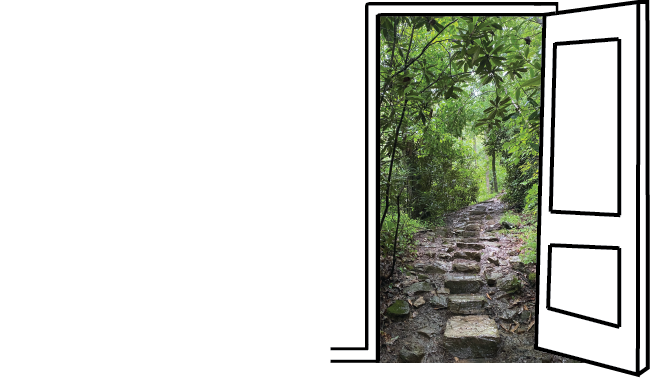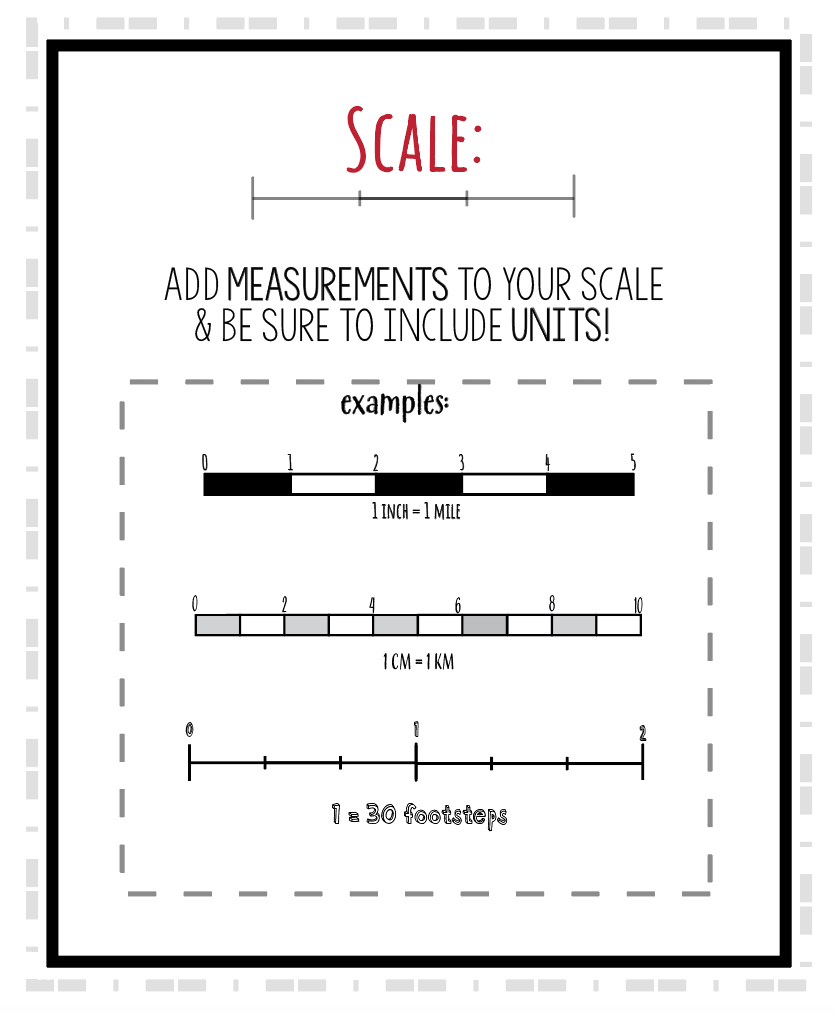Basic Map skills
Where are we going? How do we get there? When will we be there? These are questions often asked by children.
They are constantly trying to process their surroundings and you can help them become self-reliant and comfortable navigating their surroundings by introducing map skills. We will help you get started on your journey with some basic map skills.
Parts of a Map:
Title
The title of the map should be the subject and purpose of the map. The title should easily explain to people viewing the map what they are looking at (may include location, dates, or the type of map). Titles should be noticeable and written clearly for all to see. Be sure to capitalize the first letter in each word of your title!
2. Compass Rose
Begin this learning journey with the sun. Take note of where the sun is located at different times of the day. For several consecutive days (if weather cooperates) make notes of where the sun is in the sky in relation to your house, school, yard.
For example: at 8 AM the sun is in front of my house. 12PM the sun is directly over my house. 4PM the sun is behind my house. 6PM the sun is going down in my backyard.
You can make a simple map with your child indicating the sun's location at the different times of the day. Kids will notice that it is almost always the same each day.
Now is the time to discuss how the sun always rises in the east and sets in the west. Find the east and west in your location. Now that you have the east and the west you can find north and south.
Introduce the compass rose and label your space with the cardinal directions. Play a fun game having the children run the direction you call out.
Look at a map together and find the compass rose.
3. Scale
To understand the idea of scale have the children use their own footsteps as a measuring tool. Illustrate the concept by having them walk from a designated area to a tree, while counting their footsteps. They will discover that it would be difficult to show this on a small map so they will need to make each footstep be a certain measurement on a measuring stick.
For example, every one of my footsteps will equal one inch on a map. Give them a measuring tool and have them show how far it is to the tree.
*Stride method is helpful when creating a scale- learn how to use the stride method here.
Give children maps with scales and let them figure out distances between two points on the map using the scale.
4. Key
To find your way on a map you will need landmarks. Objects and easily recognizable things in your environment will help you find your way. These can be turned into symbols and used on a map.
Show some samples of legends or keys on a trail map. Have children try to figure out what several of the symbols might represent.
Look at your own outdoor space, what do you see? How can you turn the landmarks in your yard into symbols?
Help your child learn about these important skills in an easy way!
Download our map-making tool kit:
A Cartographer’s Adventure
The first page in the learning bundle gives children a chance to practice their map skills through easy hands-on experiences, before diving into the next pages where they will be creating all different kinds of maps!
A Cartographer’s Adventure is a cross-curricular learning tool that touches on: problem solving, spatial skills, creativity, fine-motor skills, and these academic focused skills:
Math: measuring, computation, comparing, interpreting & analyzing data
Literacy: reading, writing, vocabulary
Science: space, ecosystem, weather, experiments: observing & recording
Social Studies: geography, map skills, history





